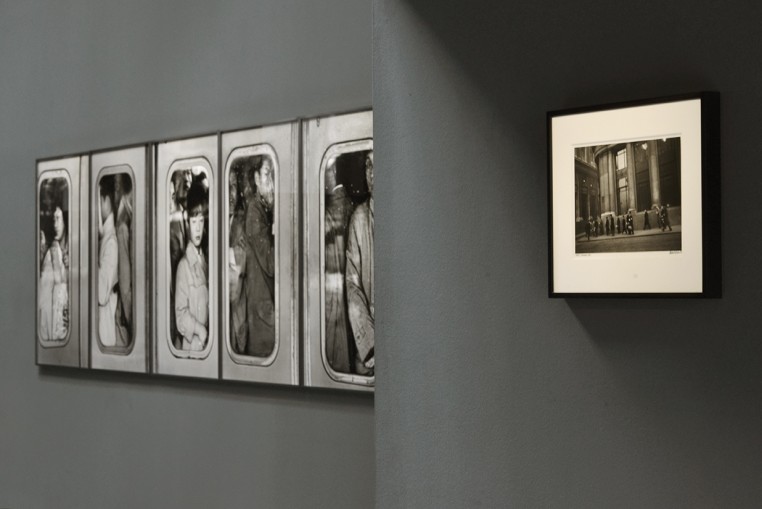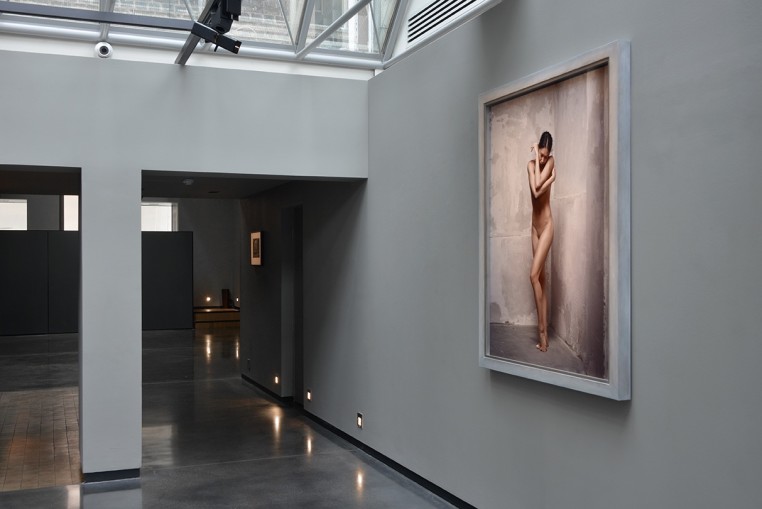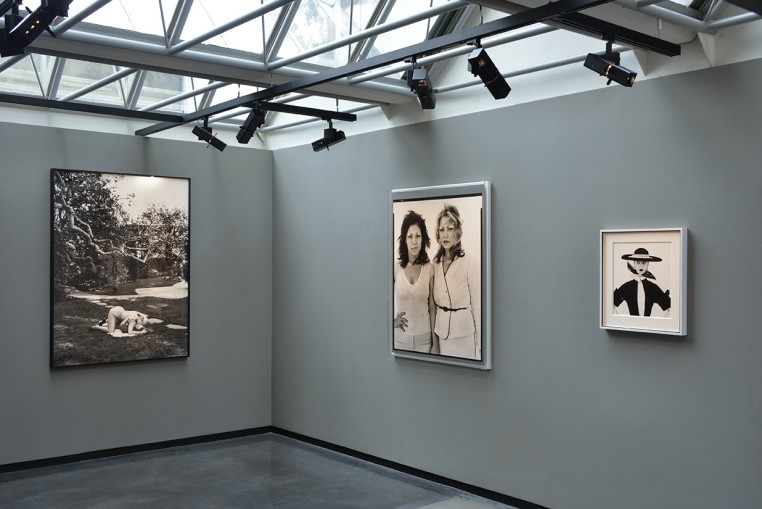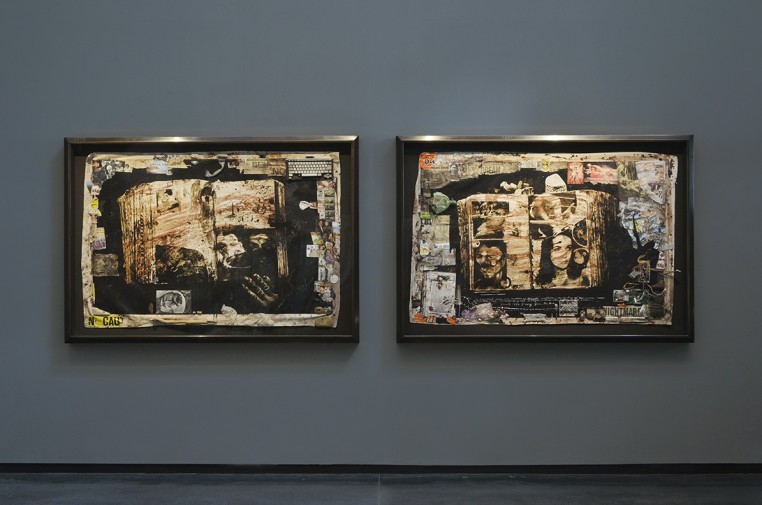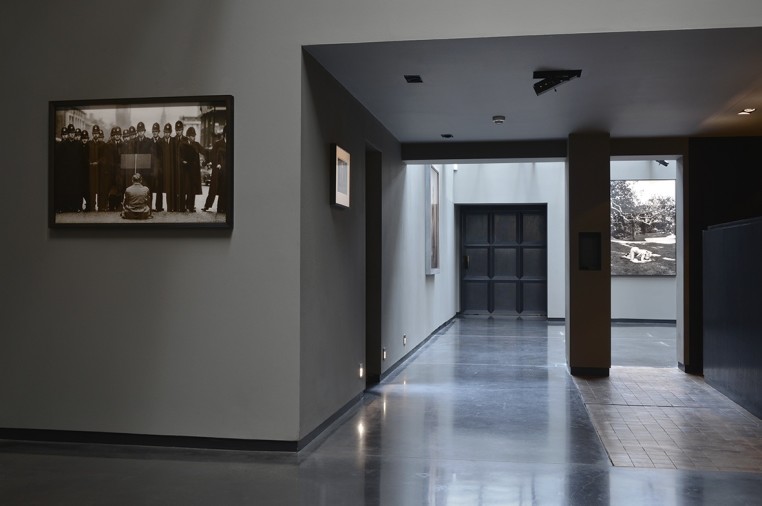Hamiltons’ group show Modern Masters presented a selection of work by some of the greatest names in Modern and Contemporary photographic history, including Helmut Newton, Irving Penn, Richard Avedon, Herb Ritts, Robert Mapplethorpe, Robert Frank, Sir Don McCullin, Peter Beard, Hiro and Erwin Olaf.
Highlights
Hiro
Shortly after arriving in America from Japan in 1954, Hiro landed an apprenticeship in Richard Avedon’s studio. Avedon soon sent Hiro to legendary art director Alexey Brodovitch and within a few years Hiro had risen to extraordinary heights as a fashion photographer.By 1963 Hiro became the only photographer under contract at Harper’s Bazaar, a position he kept for the nextten years and he continues to take assignments with the magazine.
Hiro discovers beauty in the extraordinary. His work is characterised by surprises, abnormalities, unusual lighting, Surrealism, the unreal and an astounding and constant vision. After several years spent in New York, Hiro was sent back to Japan to capture a personal reflection of the country, and this photograph Shinjuku Station, Tokyo, Japan, 1962, is what he returned with. This is the last available installation from the edition.
Sir Don McCullin
McCullin was born in 1935 in London’s Finsbury Park, one of London’s roughest areas at the time. Leaving school at fifteen with no qualifications, McCullin signed up to the RAF as a photographic assistant. In 1958, McCullin took his first published photograph of The Guvnors, a London gang who had been involved in the murder of a local policeman. The image appeared in The Observer that same year, securing his contract with The Observer in 1961. Initially based on projects in London, his work soon took him around the world, starting with the building of the Berlin Wall, 1961 and soon after the Cyprus War, 1964, marking the start of his career as a photographer of war and other human disasters. Between 1966 and 1984, McCullin worked for The Sunday Times Magazinewhich was at the cutting edge of investigative, critical journalism, leading McCullin on assignments including Biafra, the Belgian Congo, the Northern Irish ‘Troubles’, Bangladesh and the Lebanese civil war. Sir Don was awarded a knighthood in the 2017 New Years Honours list.
Robert Frank
Considered one of the most influential figures in the history of photography, Frank found fame in the 1960s with his ground-breaking book The Americans. The series offers a profound insight into the country’s cultural and social conditions and, despite initially perplexing critics due to its unorthodox style, soon became and still remains widely regarded as a pivotal work in 20thcentury art history.
Frank’s fame can be traced to his time spent in Paris, England and Wales in the 1950s. In London, where this photograph was taken, Frank photographed labourers and bankers alike, capturing the city’s spirit following World War II. Frank’s camera becomes an extension of his eye, depicting individuals each with their own stories to tell.
Erwin Olaf
Olaf has often used themes of theatre and cinema in his photographs. With his combination of photojournalism and studio photography, Olaf emerged on to the international art scene in 1988 when he was awarded first prize in the Young European Photographer competition. Olaf’s trademark is to address social issues within the framework of a highly stylised mode of imagery.
The After Rodinseries was originally commissioned by the Groninger Museum, The Netherlands in 2017 and their collection now includes nine works from the series. In this series, Olaf pays homage to individual masterpieces by the impressionist sculptor August Rodin and by using members of the Dutch National Ballet to do so. Each of the pictures is titled after the sculpture from which it has been inspired. Olaf also pays tribute to the marbles of the French master with a uniquely sparse, stone background, rather than his more common, elaborate stages.
Helmut Newton
Over the years, Newton's work centred primarily on fashion, nudes, and portraits, with the three categories often mixing. With the encouragement of his wife June he began to photograph more overtly erotic nudes, sometimes in his studio, and other times in the jet-set retreats of Europe and The Americas. His black-and-white photographs combine the feel of 1930s noir photojournalism with aspects of New Wave films, reflecting his directorial mastery. Newton challenged conventions with his provocative, hybrid photography that embraced fashion, erotica, portrait, and documentary elements, producing a highly stylized interpretation of elegant and decadent ways of life.
Richard Avedon
For more than fifty years, Avedon’s portraits have filled the pages of the country’s finest magazines. His stark imagery and brilliant insight into his subjects’ characters made him one of the premier American portrait photographers. As Avedon’s reputation grew, so did the opportunities to meet and photograph celebrities from a broad range of disciplines. Avedon’s ability to present personal views of public figures, who were otherwise distant and inaccessible, was immediately recognized by the public and the celebrities themselves. Throughout his career Avedon maintained a unique style all his own. Famous for their minimalism, Avedon portraits are often well lit and in front of white backdrops. When printed, the images regularly contain the dark outline of the film in which the image was framed.
Avedon has collaborated on a number of books of portraits, photographing names such Truman Capote, Buster Keaton, Gloria Vanderbilt, Pablo Picasso, Dr. J. Robert Oppenheimer, Frank Lloyd Wright, and Mae West. In 1979 he drifted from his celebrity portraits with a series of studio images of drifters, carnival workers, and working class Americans. The American West, of which this photograph is part, is now recognised as one of his most intimate, moving bodies of work.
Irving Penn
Penn was taught advertising design by the esteemed art director Alexey Brodovitch. While training for a career as an art director, Penn worked the last two summers for Harper’s Bazaarmagazine as an office boy and apprentice artist. At this time he had no thought of becoming a photographer.
In New York he won an audience with Alexander Liberman, art director of Voguemagazine, who hired Penn as his assistant, specifically to suggest photographic covers for Vogue. Using a borrowed camera, and drawing on his art background and experience, Penn arranged a still life which dazzled the tough-minded editor. It was published as the Voguecover for the issue of October 1, 1943 and launched Penn on his photographic career. Penn soon demonstrated his extraordinary capacity for work, versatility, inventiveness and imagination in a number of fields including editorial illustration, advertising, photojournalism, portraits, still life, travel, and television. This Black and White Vogue Cover is among Penn’s most famous pictures.
Robert Mapplethorpe
Mapplethorpe was part of a group of artists which became essential to the New York Art scene in the 1970’s and 80’s. Though he studied graphic arts, his acquisition of a Polaroid camera in 1970 changed his course forever. Only three years later, he purchased a medium-format camera and began photographing his circle of friends including other artists, socialites, and those in the New York underground community. His appreciation of the nude physical form challenged traditional models of the sensual and sensitive – instead focusing on the power and structure of male and female bodies.
With nearly fifteen years of success behind him, Mapplethorpe was diagnosed with HIV/AIDS. Thereafter, his nudes became even more statuesque, paying homage to a Classical aesthetic. The picture of Lisa Marie in the exhibition incorporates the artist’s continued appreciation for the human body’s physical power and flexibility as well as his later passion for the Classically eternal, almost marble-still form.
Peter Beard
Peter Beard is an American artist known for mastering a range of mediums from photography to collage, notebooks and portraiture. With the help of a family fortune, he purchased a home in East Africa and his pictures from the area have made up his published work since the 1960’s. In the 1970’s, Beard began to make artworks from his journals and photographs, incorporating his own blood and other materials in artworks of all sizes. These two 1996 large format collages are some of the most imposing and monumental of his later pictures. Whilst Beard’s exhibition history includes impressive institutions from as early as 1977, and his continuing popularity is a testament to the enduring visual power of his pictures.
